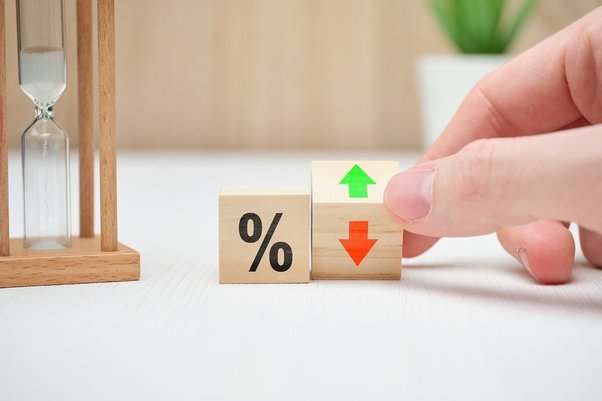Low-interest rates can be difficult to figure out. Knowing the right time to apply them is especially valuable for many businesses.
See Also: Government Regulation — The Automotive Industry
What Does an Environment of Low-Interest Rates Mean?
Although predicting the effects of low-interest rates is not a precise science, there are some trends to look out for. When interest rates are low, the following themes are some of the most typical ones to anticipate:
As bank deposit rates decline, investors move to shares and real estate for more alluring returns and to create income, which causes stock and property prices to climb. The rising demand drives up the cost of shares and real estate.
Bond prices increase – As interest rates decline, bonds’ income or yield often decreases as well. Bond prices rise when bond rates decline.
Low-interest rates discourage savers, encouraging households to spend their money to boost the economy. This results in increased domestic consumption. Additionally, using credit cards, personal loans, and business loans results in lower costs for spending. The possibility of both corporate and personal spending rises as a result.
Export activity rises as a result of the Australian dollar’s decline in value, which makes local items less expensive and more in demand abroad. This increases the amount of money entering the economy and adds jobs. In contrast, imports decline.
Low-risk assets in an environment with low-interest rates
A balanced style investment portfolio, which historically has held 60% in stocks (or other growth assets) and 40% in bonds (or other defensive investments), could be expected to generate a return of 6% annually five years ago. The likelihood of the same portfolio generating a 6% return in the current climate is substantially lower since paying greater prices for growth assets makes it tougher for them to deliver the same return as before and because you receive lower yields on your bonds.
Investors must then decide whether to accept a lower return or look for alternatives to conventional investment strategies to manage the risks the low-rate environment creates in order to generate the same 6% return: either by having more growth assets and taking on more risk (to make up for the lower amount of income that defensive assets produce), accepting a lower return, or accepting a lower return.
Managing investment risk is a crucial component of building a portfolio in an economy with low-interest rates. Risk must be weighed against the possibility of receiving lesser returns and the possibility of having your capital depleted by inflation. Making the best investments for you requires first having a thorough understanding of these dangers.
Retirement and Low-Interest Investing
A defensive portfolio in a low-interest environment may result in investment returns that are insufficient to meet income needs, the effects of inflation, and over the longer term, the possibility that your money will run out for retirees and those who are nearing retirement whose goal is to preserve capital accumulated over the years and generate income to fund their lifestyle.
Planning your spending, creating an investment portfolio, and putting it into action can all help to reduce longevity risk or the chance of outliving your money.



















